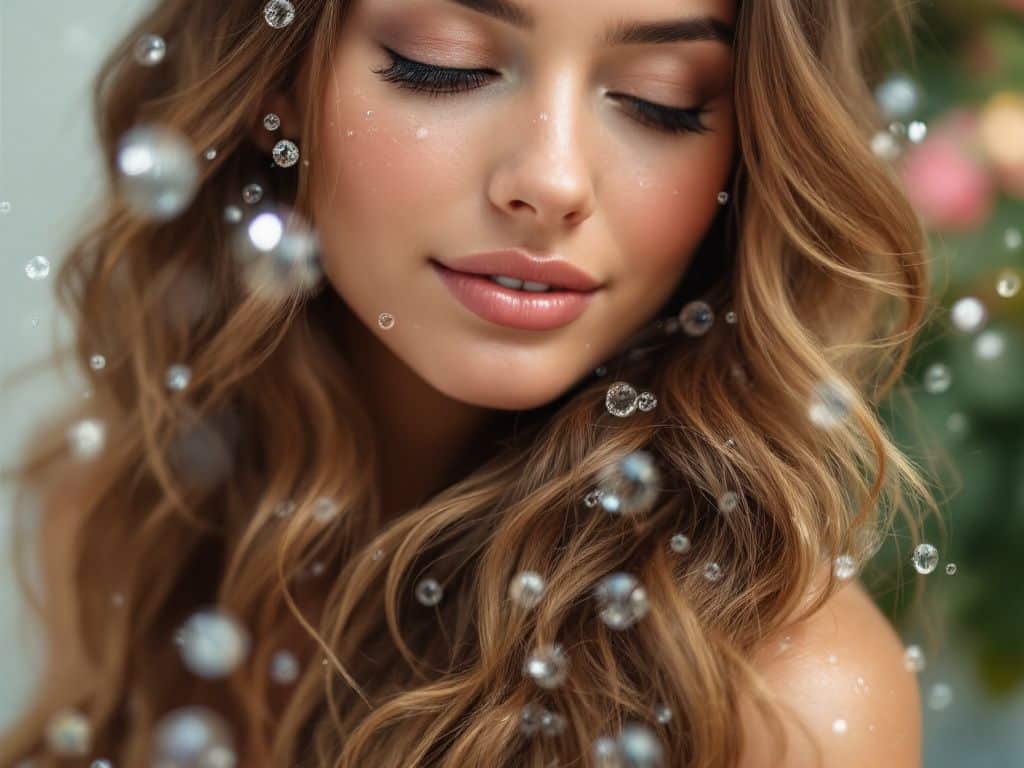
Clarifying hair is a crucial step in any comprehensive hair care routine, particularly for individuals experiencing product buildup or those with hard water exposure. As an expert trichologist, I am here to elucidate the intricacies of hair clarifying and demystify the science behind effective treatment and maintenance strategies.
Understanding Hair Clarification
Hair clarification involves the removal of product buildup, minerals, and other impurities that regular shampoos often leave behind. Buildup can weigh down hair, lead to dullness, and even impede scalp health. Clarifying employs specialized shampoos with potent surfactants that enhance detoxification.
Key Ingredients in Clarifying Shampoos
- Surfactants: These are the core cleansing agents that lift away debris from the hair shaft. Specifically, sodium lauryl sulfate (SLS) and sodium laureth sulfate (SLES) are common in clarifying shampoos due to their superior cleansing properties. However, for those with sensitive scalps, surfactants like cocamidopropyl betaine might be preferable, offering a milder yet effective option.
- Chelating Agents: Compounds such as EDTA (ethylenediaminetetraacetic acid) are instrumental in binding metal ions from hard water, neutralizing their dulling effects.
- Acidic Agents: Ingredients like apple cider vinegar or citric acid help in lowering the pH of the shampoo, which aids in tightening the hair cuticle and promoting a smoother finish.
Recommended Clarifying Shampoos

- Neutrogena Anti-Residue Shampoo: Known for its simple yet potent formulation, this shampoo efficiently lifts away up to 90% of product residues with its effective surfactant base.
- Paul Mitchell Shampoo Two: This is an excellent option for combating oiliness. Its deep-cleansing formula balances oil without halting the moisture essential for scalp health.
Frequency and Technique

The frequency of clarifying depends critically on hair type and lifestyle factors. For those with normal to oily hair, bi-weekly use of a clarifying shampoo can suffice. Individuals with color-treated or highly textured hair should consider monthly clarifications to prevent excess drying and damage.
When clarifying, apply the shampoo to wet hair and work it into a rich lather, focusing on the scalp and working through to the ends. Rinse thoroughly, ensuring no residue remains, and follow with a deep-conditioning treatment to restore moisture balance.
Addressing Common Clarifying Concerns
**Color Fade**

Clarifying shampoos are known for their robust cleansing action, which might accelerate color fading. If color longevity is a concern, consider using color-protective clarifying shampoos containing gentler surfactants, and limit usage as needed.
**Dryness and Porosity**
After clarifying, hair may exhibit increased dryness or altered porosity. This is primarily due to the removal of natural oils along with buildup. To mitigate these effects, infuse a post-clarify routine with intensive moisturizers or hydrating masks containing ingredients like hyaluronic acid and shea butter.
Conclusion
Incorporating a clarifying step is indispensable for preserving hair vitality. By understanding the roles of key ingredients, selecting appropriate products, and adopting beneficial post-clarifying care, individuals can maintain their hair health optimally. The science of hair care demands precision and personalization, and remaining informed is your best tool in attaining hair that looks and feels its finest.
Frequently Asked Questions
What is the importance of proper washing in clarifying curly hair?
Proper washing is crucial for clarifying curly hair as it helps remove product buildup and impurities without stripping the hair of its natural oils. Using a specific shampoo and conditioner suitable for your curly hair type is essential for maintaining moisture and definition[1][2][5).
How can I enhance definition in my curly hair?
To enhance definition in curly hair, you can use various techniques such as plopping, creating finger coils, the Fitagem method, or the rake and shake technique. These methods involve applying styling products in specific ways and using techniques like scrunching and diffusing to achieve better curl definition[1][3][5).
What are some effective styling techniques for curly hair?
Effective styling techniques for curly hair include the Smasters Technique, the Smooch Method, and the Roping Method. These techniques involve applying product in specific ways, such as using the praying hands method, raking product through the hair, or squeezing sections of hair to distribute product evenly[2][3).
How can I reduce frizz and maintain moisture in my curly hair?
To reduce frizz and maintain moisture in curly hair, use sulfate-free shampoos, deep conditioning treatments, and styling products that hydrate and define curls. Techniques like scrunching and using a diffuser can also help in minimizing frizz and enhancing curl definition[1][4][5).
References

Leave a Reply